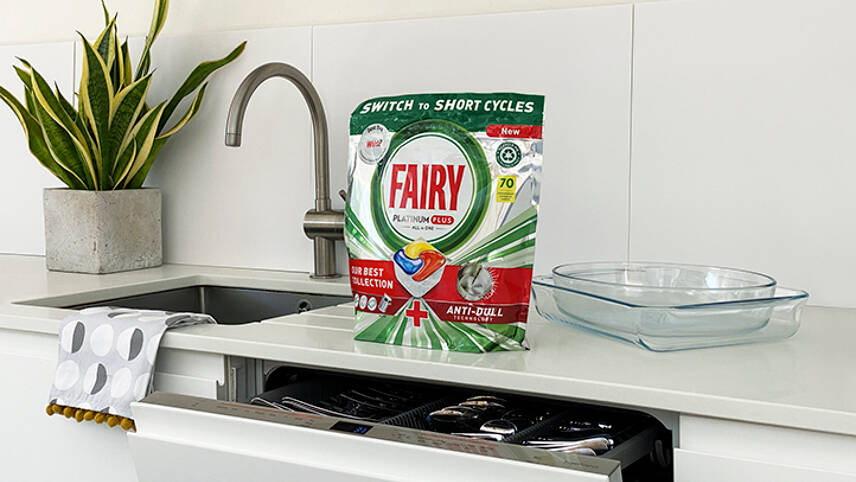Register for free and continue reading
Join our growing army of changemakers and get unlimited access to our premium content

This innovation process builds into an overarching commitment for P&G to reach net-zero by 2040
The Fairy brand has found that consumers can reduce the emissions associated with dishwashing by hand or when using a dishwasher by between 33% to 60% annually.
The LCA studies, which are certified to ISO standards across 10 European countries, found that the majority of emissions from both hand and machine dishwashing came from the heating of water, with additional energy also required to run dishwasher cycles in kitchens.
P&G found that, on average, heating processes can account for up to 93% of hand dishwashing’s carbon footprint and 72% of the carbon footprint when using a machine.
In response, the Fairy brand is calling on consumers to switch to cooler temperatures to wash dishes by hand or switch to shorter cycles on a dishwasher. The LCA found that a reduction in emission could be recorded when moving to 23C for temperatures, for example.
Fairy has also incorporated the findings into its own product innovation. The latest Fairy formulas are designed with a Fast Activating Cleaning System for faster action in short cycles, so can be used to reduce emissions as a result.
P&G’s senior vice president for Home Care brands, Oya Ongor said: “As staple products in homes across Europe, we know we have a responsibility to help families. Our research continues to find that families need a product they can trust – if it doesn’t work in sustainable conditions, they’ll stick to the behaviors they know will get the job done, and they’ve too often been let down by poor performance. That’s why we design products that are made to help consumer save energy, with products delivering impeccable cleaning results in challenging energy efficient conditions.
“Our sustainability journey doesn’t stop there, of course. We also continue to innovate across our packaging, manufacturing, production and supply chains, as part of our efforts to evaluate and improve our overall LCA, contributing to P&G’s 2030 sustainability targets. We are proud to work with external expert partners to support our vision, for example, our partnership with Energy Saving Trust to verify UK energy saving potential through changing dishwashing habits”.
In a previous blog post for edie, the company explained how it was working with the likes of NASA; Twelve, a start-up at the forefront of carbon transformation; and academic institutions, to find new energy-efficient or potentially carbon-negative ingredients that are sustainable and highly effective.
This innovation process builds into an overarching commitment for P&G to reach net-zero by 2040.
In 2021, the company unveiled a climate action plan to reach net-zero emissions across its value chain by 2040 and is targeting carbon-neutral operations by 2030.
The Climate Action Plan details how replacing raw materials, embracing the circular economy and reducing carbon through better water usage will all assist with the wider net-zero goal. Other shorter-term targets include reducing virgin petroleum plastic in packaging by 50% by 2030, reducing upstream finished product freight emissions intensity 50% by 2030 and avoiding 30 million tons of carbon emissions via cold water washing by 2030.
Between 2010 and 2020 the company has reduced its absolute emissions across global operations by 52%, namely through renewable electricity and energy efficiency upgrades.


Please login or Register to leave a comment.